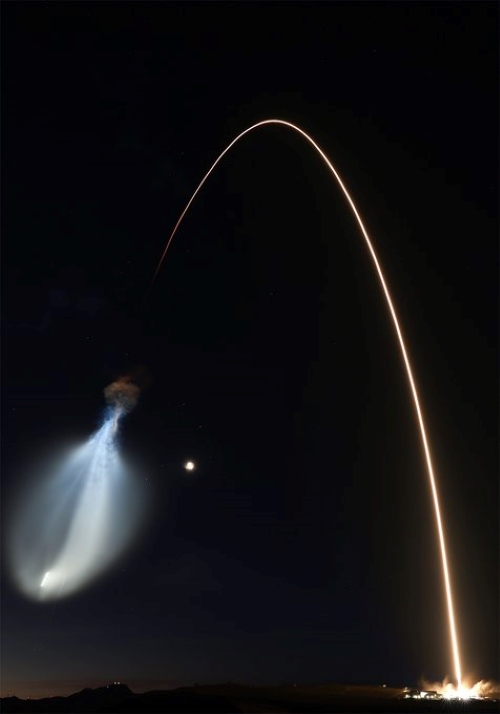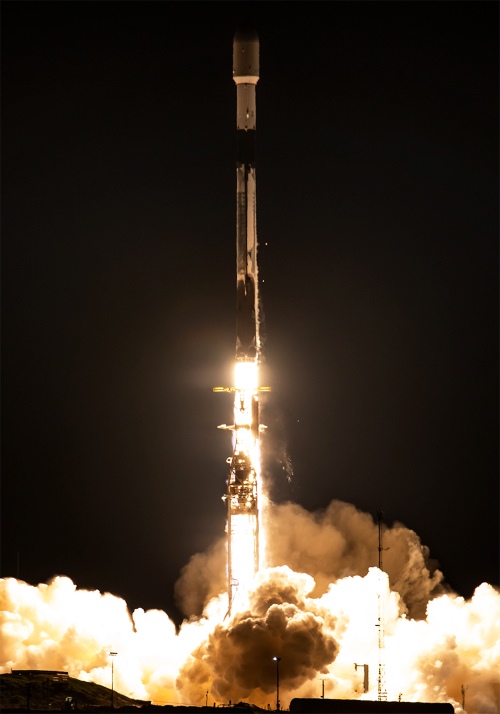SpaceX, the aerospace powerhouse led by Elon Musk, continues to push the boundaries of innovation with its cutting-edge space missions.
The latest Starlink launches in January 2025 showcase not only the company’s technological advancements but also its commitment to revolutionizing space travel and internet connectivity.
SpaceX’s Falcon 9 rockets successfully deployed 44 Starlink satellites in two separate launches, achieving multiple milestones.
SpaceX tweeted about the successful launch of Falcon 9, celebrating another milestone in their journey to revolutionize space travel with reusable rocket technology
"Falcon 9 lifts off from pad 4E in California, delivering 23
satellites to the constellation"
Falcon 9 lifts off from pad 4E in California, delivering 23 @Starlink satellites to the constellation pic.twitter.com/Pqpz0zW3Vh
— SpaceX (@SpaceX) January 24, 2025
In this article, we take an in-depth look at these groundbreaking missions, the technology behind them, and the transformative potential of SpaceX’s global internet service.

Source: x.com/SpaceX
The Latest Starlink Missions: Key Highlights
SpaceX achieved two major accomplishments this month with the launch of Starlink 11-6 and Starlink 12-7 missions. Each mission marks another step toward fulfilling SpaceX’s vision of a connected world.
1. Starlink 11-6 Mission (California Launch)
- Date & Time: January 24, 2025, 6:07 a.m. PST (9:07 a.m. EST)
- Location: Vandenberg Space Force Base, California
- Payload: 23 Starlink satellites
- Rocket Details:
- Booster ID: Falcon 9 B1063
- Mission History:
- 23rd flight for this booster
- Previously supported NASA’s DART mission and multiple Starlink missions
- Landing: Successfully landed on the droneship Of Course I Still Love You (OCISLY), marking the 118th successful landing on this platform.

Source: x.com/SpaceX
2. Starlink 12-7 Mission (Florida Launch)
- Date & Time: January 27, 2025, 3:22 p.m. ET
- Location: Space Launch Complex 40, Cape Canaveral Space Force Station, Florida
- Payload:
- 21 Starlink satellites
- 13 equipped with Direct-to-Cell capabilities for enhanced mobile connectivity.
- Rocket Details:
- Booster ID: Falcon 9 (20th flight)
- Mission History: Supported various missions including CRS-26, SXM-9, and Turksat 6A.
- Landing: Droneship A Shortfall of Gravitas stationed in the Atlantic Ocean.
![]() Source: satnews
Source: satnews
Falcon 9: The Backbone of SpaceX Missions
Falcon 9 is celebrated as the world’s first orbital-class reusable rocket, enabling significant cost reductions in space access
Below is a quick overview of its technical specifications:
| Feature | Details |
| Height | 70 m (229.6 ft) |
| Diameter | 3.7 m (12 ft) |
| Mass | 549,054 kg (1,207,920 lb) |
| Payload to Low Earth Orbit (LEO) | 22,800 kg (50,265 lb) |
| Payload to Geostationary Transfer Orbit (GTO) | 8,300 kg (18,300 lb) |
| Thrust at Sea Level | 7,607 kN (1,710,000 lbf) |
| Landing Mechanism | Carbon fiber landing legs with aluminum honeycomb. |
First Stage: Equipped with nine Merlin engines, generating 1.7 million pounds of thrust at sea level. The innovative grid fins and landing legs enable precise landings, facilitating reusability.
Second Stage: Powered by a single Merlin Vacuum Engine, it is designed for multiple restarts, ensuring payload delivery to varying orbits.
Why is Reusable Rocket Technology a Game-Changer?
SpaceX’s reusable rocket technology has drastically altered the economics of space travel. By recovering and reusing Falcon 9’s most expensive components, the company:
- Lowers the cost of launching payloads.
- Demonstrates sustainable practices in aerospace engineering.
- Enhances the frequency of launches.
To date, SpaceX has completed:
- 426 total missions
- 382 successful booster landings
- 355 total reflights
Starlink: Changing the World, One Satellite at a Time
The Starlink constellation is more than just a group of satellites; it’s a transformative force that aims to provide high-speed internet to remote areas where connectivity has always been a challenge. Currently, there are over 4,000 active Starlink satellites in orbit, delivering internet access to users across the globe. SpaceX’s ultimate goal is to have 12,000 satellites in orbit by the end of the decade, providing global broadband coverage.
What are the Key Benefits of Starlink?
Benefit which can be available from Starlink is:
- Global Internet Connectivity: Starlink aims to provide high-speed, low-latency broadband internet to underserved and remote areas, including those in rural regions and developing countries.
- Direct-to-Cell Technology: Starlink’s mobile internet solution for cellphones has the potential to revolutionize the telecommunications industry. The Direct-to-Cell feature enables smartphones to connect to Starlink satellites directly, bypassing traditional cell towers.
- Support During Emergencies: Starlink is proving invaluable during natural disasters and emergencies by providing a reliable communication network when terrestrial systems fail.
Future Vision
SpaceX continues to push the envelope with groundbreaking projects, including the Starship—a fully reusable spacecraft designed for interplanetary missions. Despite setbacks, such as the recent test flight anomaly, the company remains steadfast in its mission to make life multi-planetary.
Starlink Mission Summary (January 2025)
Below is a summary of the two Starlink launches that made headlines in January 2025:
| Mission | Launch Site | Payload | Booster Flight Count | Landing Site |
| Starlink 11-6 | Vandenberg Space Force Base | 23 satellites | 23 | Of Course I Still Love You |
| Starlink 12-7 | Cape Canaveral Space Force Station | 21 satellites (13 Direct-to-Cell) | 20 | A Shortfall of Gravitas |
How to view the exciting SpaceX launch?
Watching a SpaceX launch is a spectacular experience for space enthusiasts. SpaceX offers unique viewing experiences for the public to witness these milestones in space exploration. For the Starlink 12-7 mission, Kennedy Space Center offered excellent viewing areas like:
- Apollo/Saturn V Center: Learn about the history of space exploration while enjoying a front-row seat to the launch.
- Banana Creek Launch Viewing Area: Located 6.2 miles from the launch pad, this area provides a prime view of the rocket launch.
Visitors can book these experiences through Kennedy Space Center’s official website.
Conclusion: SpaceX’s Future Vision
With these successful launches, SpaceX has once again proven its leadership in the space industry. From reusable rockets that lower the cost of access to space to Starlink satellites that aim to bring the internet to the most remote parts of the world, SpaceX is pushing the boundaries of what’s possible.
The company’s ability to launch frequent missions while maintaining safety and efficiency will pave the way for the next generation of space technology, including crewed missions to Mars and beyond. SpaceX’s ongoing efforts are not just reshaping the future of space exploration—they’re also making it more accessible, more affordable, and more connected for people all over the world.
 Source: satnews
Source: satnews
Comments
All Comments (0)
Join the conversation